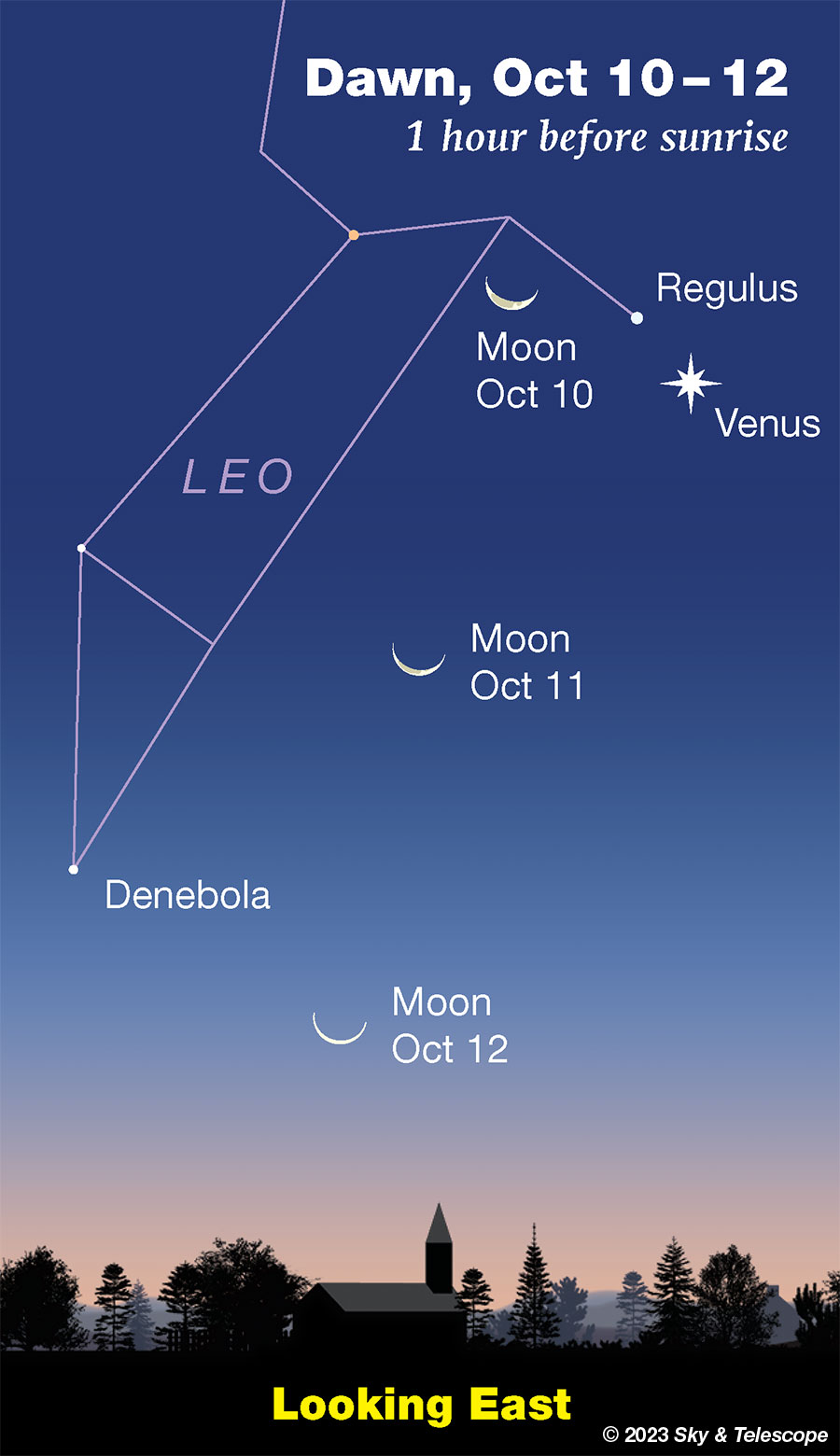Special to CosmicTribune.com, October 8, 2023, 2023
Excerpts from weekly Sky&Telescope report.
FRIDAY, OCTOBER 6
■ Arcturus shines in the west as twilight fades away. Capella, equally bright, is rising in the north-northeast (depending on your latitude; the farther north you live the higher it will be.) They’re both magnitude 0.
Higher above Fomalhaut glows Saturn, pale yellow and steady.
MONDAY, OCTOBER 9
■ Set your alarm for about 1¼ or 1½ hours before your sunrise time on Tuesday morning the 10th, and you can catch Venus, the “Morning Star,” hanging with the Moon. They’re the two brightest celestial objects after the Sun.
 TUESDAY, OCTOBER 10
TUESDAY, OCTOBER 10
■ After dark, Vega is the brightest star very high west of the zenith after dark. Face west and look up at it.
■ In early dawn Wednesday morning, the waning Moon shines lower left of Venus and Regulus.
WEDNESDAY, OCTOBER 11
■ This is the time of year when, after nightfall, W-shaped Cassiopeia stands on end halfway up the northeastern sky — and when, off to its left in the north, the dim Little Dipper extends left from Polaris.
THURSDAY, OCTOBER 12
■ After dark, spot the W of Cassiopeia high in the northeast. It’s standing almost on end. The third segment of the W, counting down from the top, points down. Extend that segment twice as far down as its own length, and you’re at the Double Cluster in Perseus. This combined pair of little gray glows is dimly apparent to the unaided eye in a dark sky (use averted vision), and it’s visible from almost anywhere with binoculars. It’s two lovely star-spangles in a telescope.
FRIDAY, OCTOBER 13
■ Vega is the brightest star high in the west these evenings. Less high in the southwest is Altair, not quite as bright. Just upper right of Altair, by a finger-width at arm’s length, is little orange Tarazed. Down from Tarazed runs the stick-figure backbone of the constellation Aquila, the Eagle, along the Milky Way.
SATURDAY, OCTOBER 14
■ Annular eclipse of the Sun today. The path of annularity crosses Oregon, northern Nevada, Utah, New Mexico, west-central and southern Texas, Central America, Colombia, and Brazil.
Meanwhile, a partial solar eclipse will be seen over a much wider area: practically all of North, Central, and South America and the Caribbean.
■ New Moon — because, of course, it’s solar eclipse day!
SUNDAY, OCTOBER 15
■ Now that it’s mid-October, Deneb has replaced Vega as the zenith star after nightfall (for skywatchers at mid-northern latitudes). Accordingly, Capricornus has replaced Sagittarius as the zodiacal constellation low in the south.

You must be logged in to post a comment Login